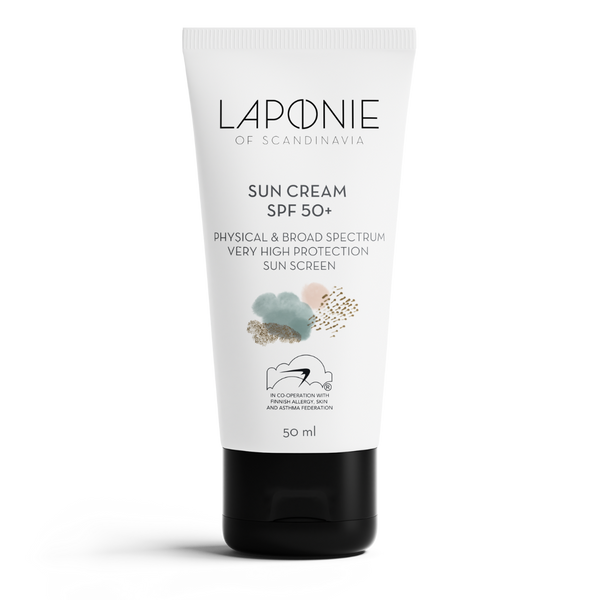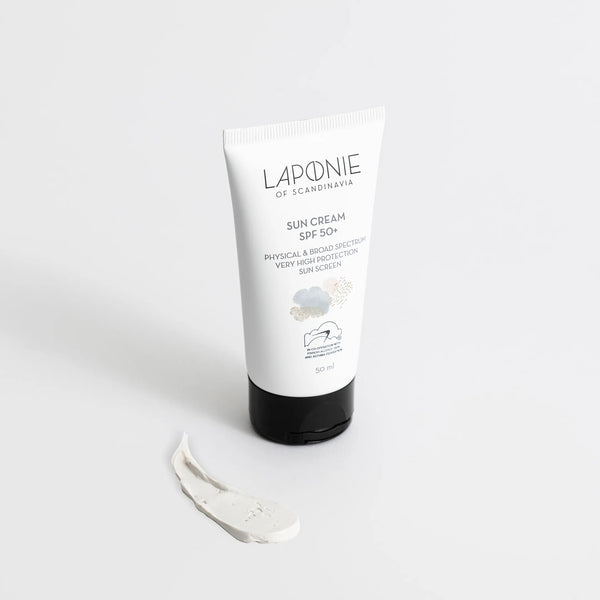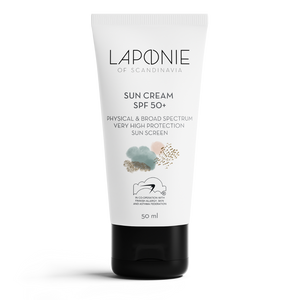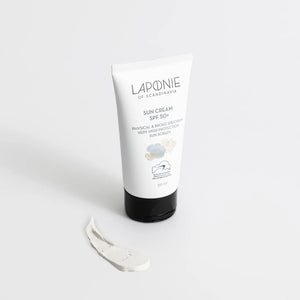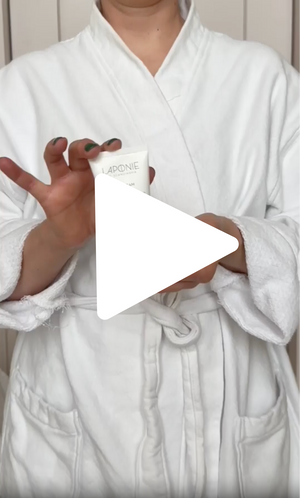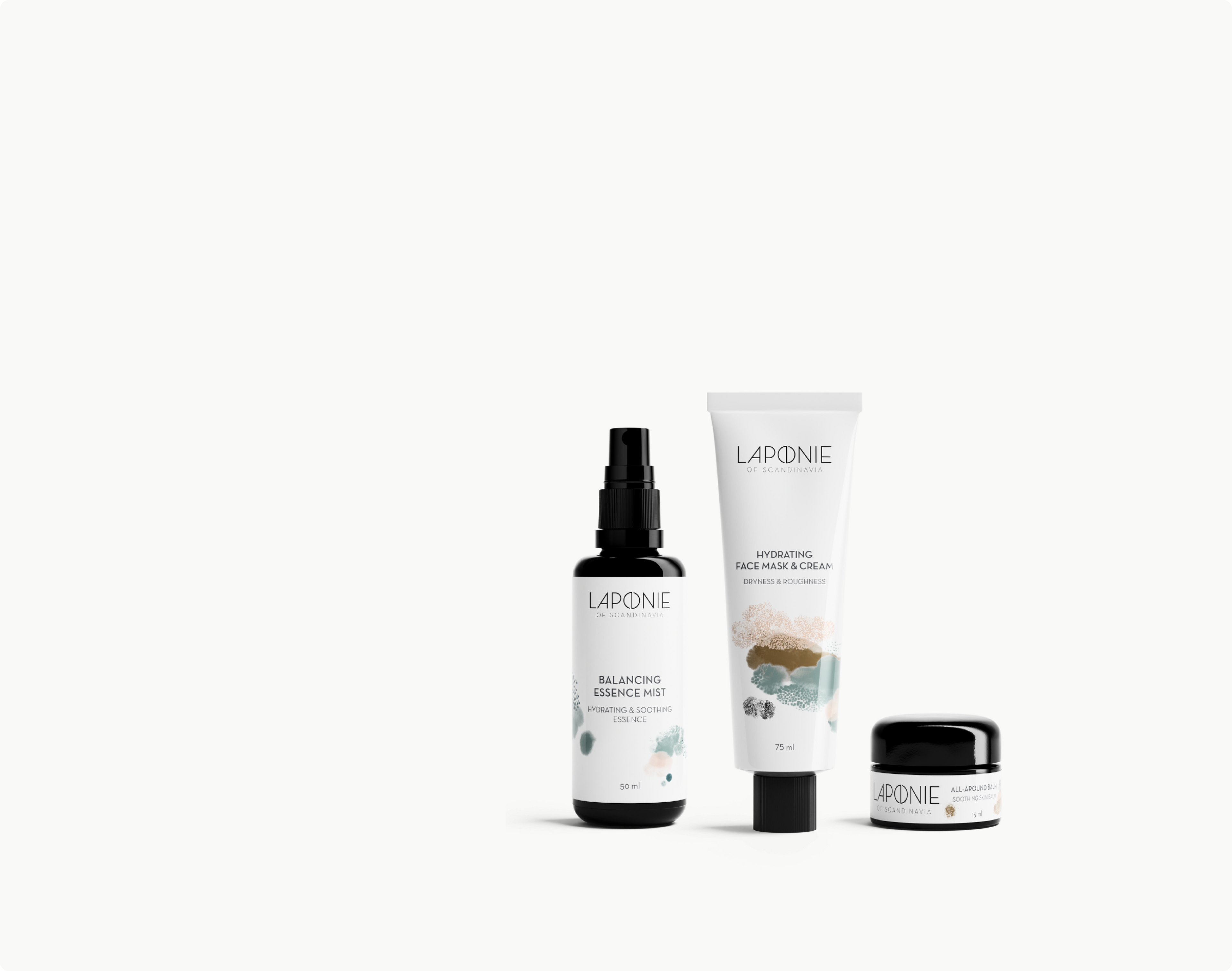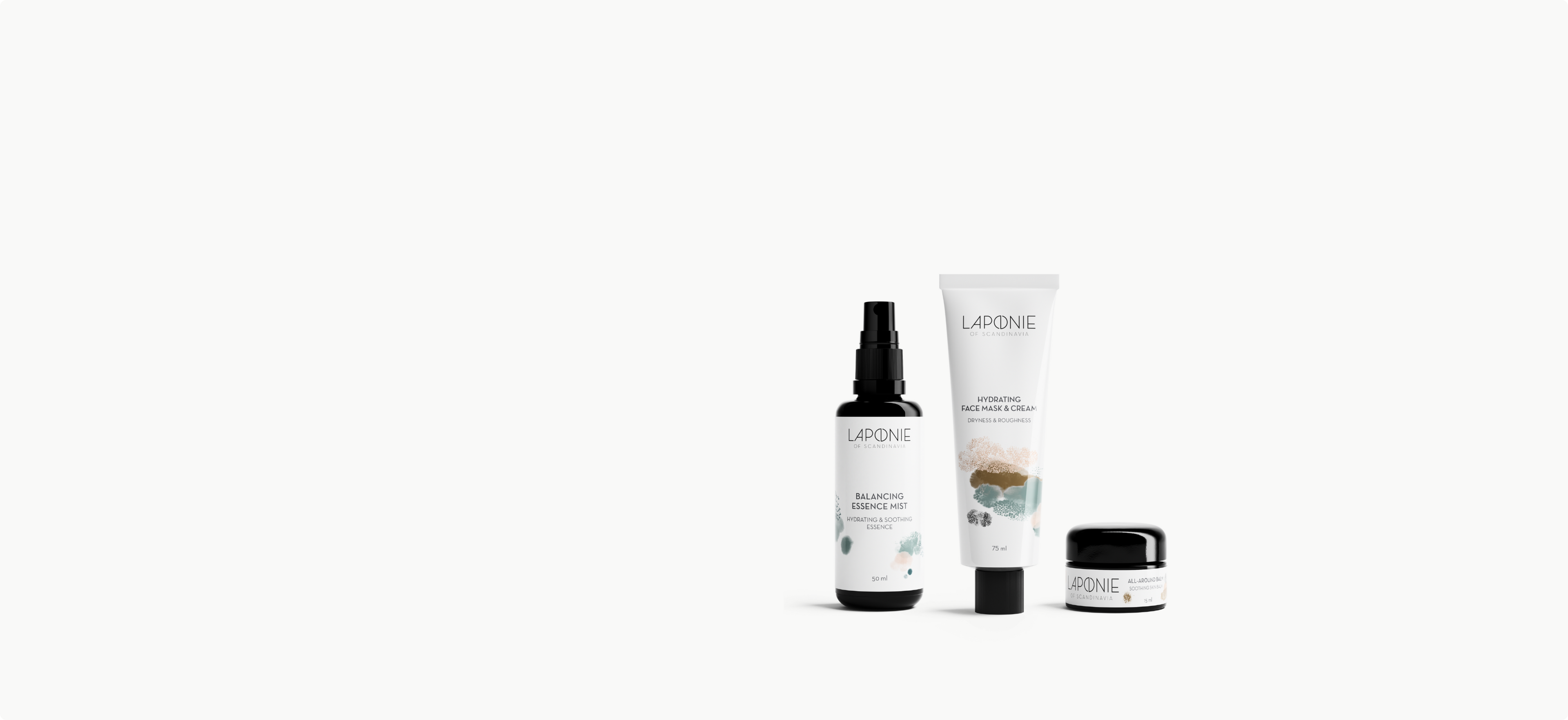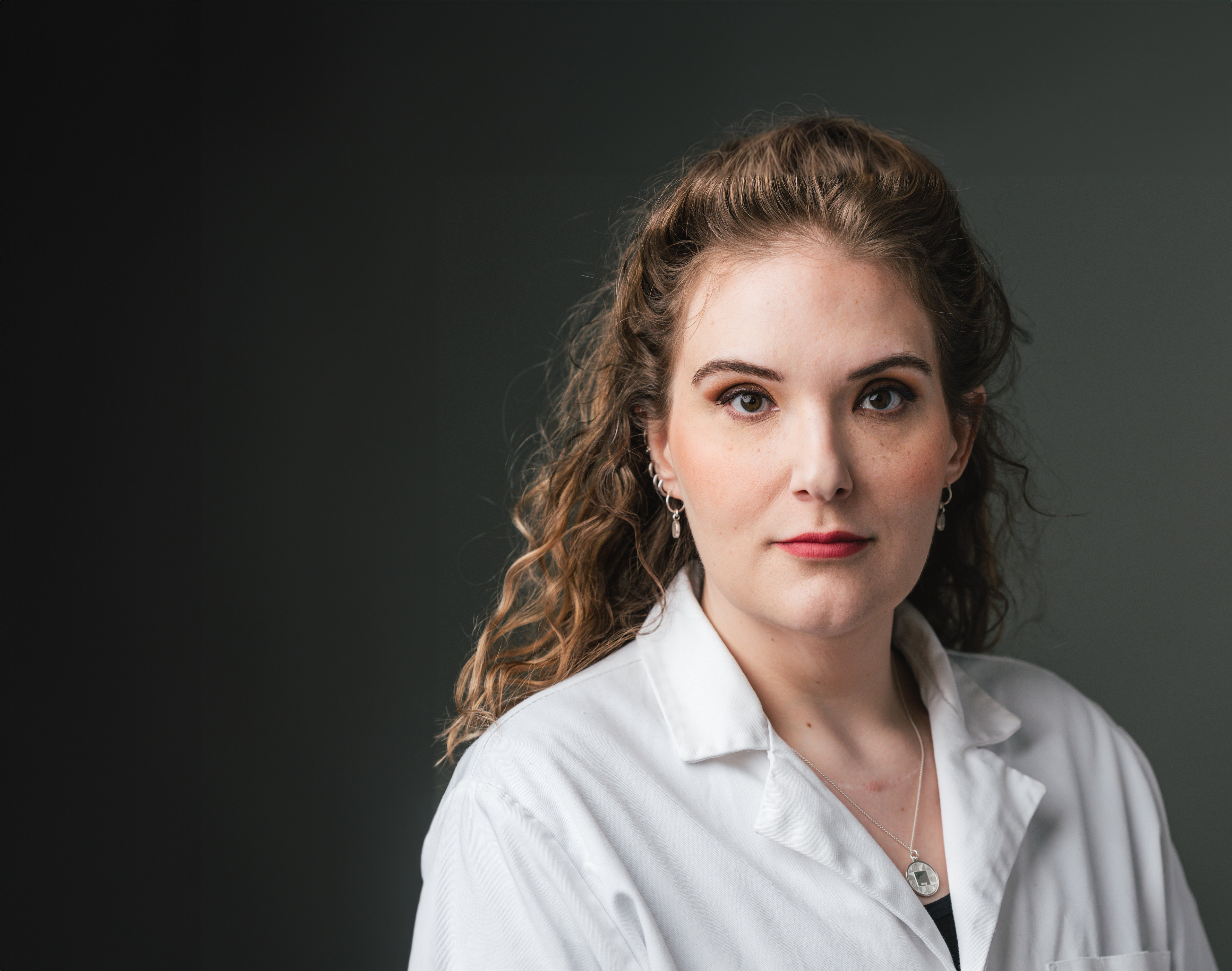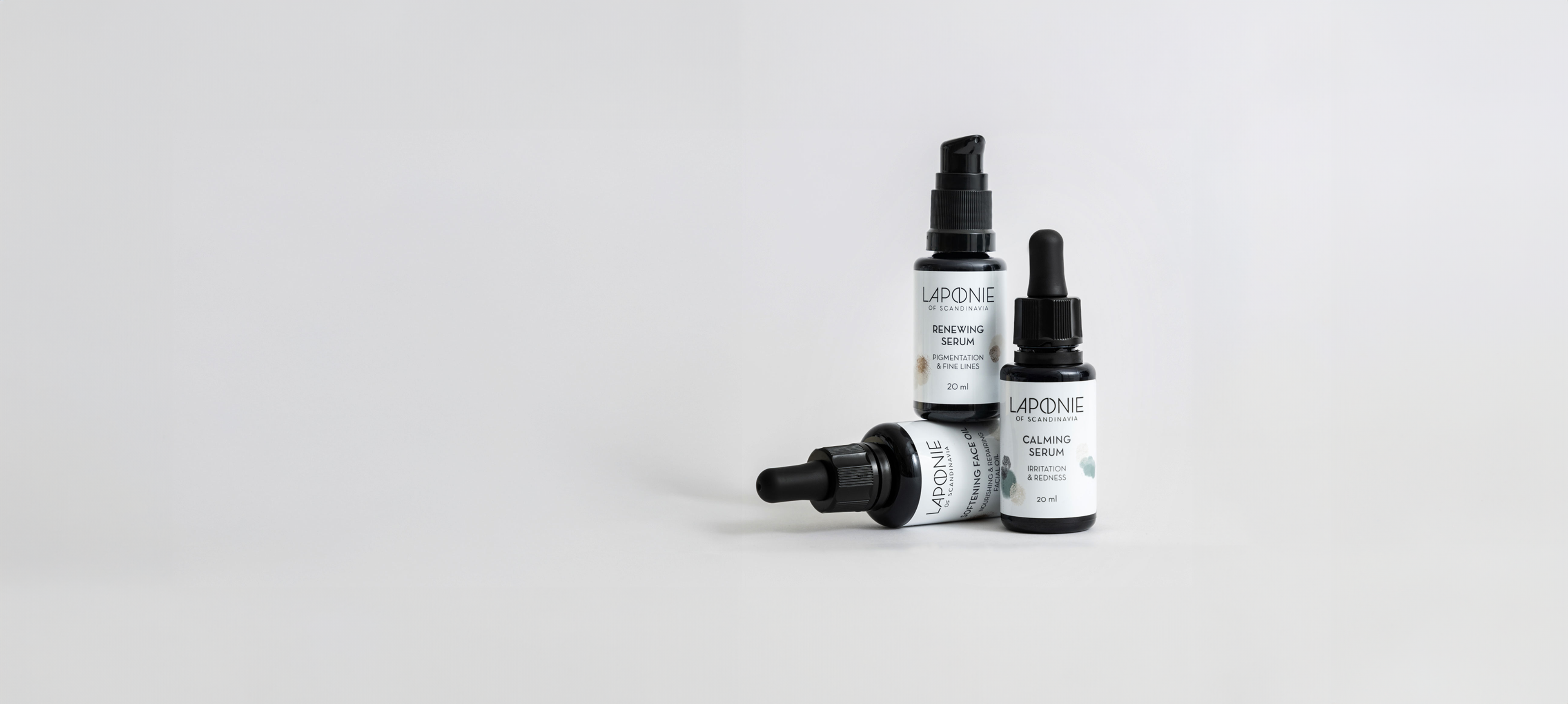
Sun Cream SPF50+
- Non-nano zinc oxide protects without irritation and ectoin hydrates and soothes.
- All skin types and concerns.
- Formulated for sensitive and problem skin without added fragrance.
-
Free sample with all orders.
-
Delivery: Finland 1-4 business days & rest of EU 2-7 business days.
-
Free delivery: Finland orders over 38€ & rest of EU 58€.
-
Safe payments.
Our broad spectrum mineral SPF protects, hydrates and soothes all kinds of sensitive and problem skin.
Made with just one, single SPF filter in the form of non-nano zinc oxide, our Cream also contains natural ectoin to soothe redness and strengthen skin for a healthy skin barrier, while Swedish Algica (silica) from algae hydrates and balances sebum production. The result is a nourishing, slightly pearly cream, that sinks easily into skin for a non-sticky, light and transclucent finish.
Can be used under makeup and around the eyes and is suitable for children.
Do not stay too long in the sun, even while using a sunscreen product. Keep babies and young children out of direct sunlight. Over-exposure to the sun is a serious health threat.
Did you know: in terms of physical SPF filters non-nano zinc dioxide is the ideal choice for sensitive skin because the bigger particles in the filter (that’s the non-nano part) sit on top of skin and zinc-oxide as such is a safe, mild and non-irritating choice. Non-nano zinc-oxide is approved worldwide as an UV filter.
Aqua, Zinc Oxide, Caprylic/Capric Triglyceride, Shea Butter Ethyl Esters, Propanediol, C9-12 Alkane, Polyglyceryl-4 Olivate/Polyricinoleate, Disteardimonium Hectorite, Glycerin, Polyhydroxystearic Acid, Triethyl Citrate, Calcium Carbonate, Magnesium Sulfate, Ectoin, Silica (Algica), Dehydroacetic Acid, Sodium Hydroxide, Sclerotium Gum, Xanthan Gum , Citric Acid, Phytic Acid
Aqua
Solvent. Water. The main vehicle for our water based products
Zinc Oxide
UV-filter. Zinc oxide (ZnO) is a crystalline inorganic (mineral) white powder that finds use in a large array of applications as a bulking agent, white pigment, UV filter as well as a medication for irritated skin. The crystalline nature of zinc oxide means that the shape and size of the powder particles defines its physical properties, including UV absorption. For sunscreens, most ZnO used is coated with protective materials (such as dimethicone) to increase stability. Thus, the concentration of ZnO needed for adequate sun protection highly depends on the specific raw material. Since zinc oxide is also used to help soothe angry skin and does not generally cause skin reactions, we chose it as our sole UV filter. Another benefit of zinc oxide is that it usually does not cause eye sting.
Caprylic/Capric Triglyceride
Solvent. Skin conditioning. Caprylic/Capric Triglyceride is the mixed triester of glycerin and caprylic and capric acids. Obtained from coconut (but NOT the same as coconut oil!), 'trigly' is an effective solvent for zinc oxide and a great, overall skin conditioner for most types of skin, including very breakout prone malassezia skin. Our SPF filter is dispersed in caprylic/capric triglyceride.
Shea Butter Ethyl Esters
Skin conditioning. Emollient. Shea Butter Ethyl Esters are obtained by the transesterification of Butyrospermum Parkii (Shea) Butter and ethyl alcohol.
Propanediol
Solvent and humectant. Apart from being an excellent, non-irritating solvent, the glycol propanediol has excellent hydrating and preservative boosting properties. The one we use is made from fermentation of glucose, from corn.
C9-12 Alkane
Solvent. Commonly used in skincare. Offers structure and stability to our Cream and works as a silicone replacement. Plant-based.
Polyglyceryl-4 Olivate/Polyricinoleate
Surfactant. Emulsifying. An emulsifier, put simply, enables the mixing of water and oil into an emulsion, i.e. a cream. This particular one is gentle on the skin, non-ionic, and based on olive oil.
Disteardimonium Hectorite
Light stabiliser. Controls viscosity and structure in our cream. Based on naturally occurring clay mineral hectorite.
Glycerin
Humectant and skin protecting. Technically a sugar alcohol, glycerin is one of the oldest, most common and most versatile humectants used in cosmetics. It moisturises and protects the skin, accelerates skin barrier recovery and has antimicrobial properties, among other things. For our Cream we use vegetable, rapeseed-derived glycerin.
Polyhydroxystearic Acid
Surfactant. Emulsifying. An emulsifier, put simply, enables the mixing of water and oil into an emulsion. This one stabilises our SPF filter. Plant-based.
Triethyl Citrate
Plastisier. Solvent. Viscosity controlling. Lends structure and stability to our Cream. Plant-based.
Calcium Carbonate
Bulking. Opacifying. Calcium carbonate is the salt of calcium and is naturally found in e.g. chalk and limestone. It lends that "dry skin" feel to our cream without actually drying out skin and also works as a blurring agent.
Magnesium Sulfate
Bulking. Viscosity controlling. Salt of magnesium. Stabilises and thickens our Cream.
Ectoin
Skin conditioning. Ectoin is a powerful, small, multi-tasking and natural stress-protection molecule, a so-called extremolyte. From a chemical point of view, it is a cyclic amino acid derivate. Extremolytes protect extremophilic microorganisms and plants from the extreme conditions of their habitats like salt lakes, hot springs, permanent ice or deserts. The properties of ectoin have been proven by various in-vivo studies: its benefits include long-term moisturisation, diminished skin roughness, skin barrier repair and anti-inflammatory and anti-irritant properties. We get ours from a lovely little company in Germany, where it is produced through biotechnological fermentation from a specific, non-GMO strain of the halophilic bacteria Halomonas elongata.
Silica (Algica)
Absorbent. Mesoporous silica, trade named Algica and derived from cultivated diatoms (algae) od Swedish origin, that absorbs impurities and bacteria. It improves skin's moisture retention by its ability to bind water, in a manner similar to hyaluronic acid. Its porous structure supports oil and moisture absorption, hydration, protection against UV and pollutants, and an enhanced sensory feel.
Dehydroacetic Acid
Preservative. Dehydroacetic acid is chemically synthesized through a multi-step reaction, starting with acetylene. Although it is not plant derived, it is approved by natural certification institutes such as COSMOS thanks to its mildness to the skin and body, as well as the absence of any alternative registered (approved) natural preservatives under the EU cosmetic regulation. Together with potassium sorbate, sodium levulinate and p-anisic acid it makes up the preservative system in our Essence.
Sodium Hydroxide
Buffering. Sodium hydroxide is used in skincare products at a very low level to adjust the products pH to the appropriate level, making it safe for use.
Sclerotium Gum
Thickening, skin conditioning and emulsion stabilising. A natural and commonly used thickener in cosmetics, sclerotium gum too is a polysaccharide produced from sugars through fermentation. This one gets its name from the Sclerotium rolfsii bacteria species. In our Cream, it is combined with xanthan gum, lecithin, pullulan and silica to lend that lovely gel meets cream feel. Origin: glucose syrup from wheat/corn.
Xanthan Gum
Thickening, gel forming and emulsion stabilising. A natural and commonly used mainly thickener and gelling agent in cosmetics, xanthan gum is a polysaccharide produced through Bacterial fermentation of pure culture Xanthomonas Campestris with protein and carbohydrate sources, in this case from soy or corn. In our Cream, it is combined with sclerotium gum, lecithin, pullulan and silica to lend that lovely gel meets cream feel.
Citric Acid
Buffering agent. Citric acid is a commonly used buffering, i.e. pH adjusting, agent in cosmetics. It is made through bacterial fermentation and shifts the pH of the product into the acidic range. This is closer to the natural pH of the skin, which may range from 4 to 7, but is usually thought to be between 5 and 6, with recent studies, however, indicating it to be below 5.
Phytic Acid
Chelating. A chelating agent improves product stability. This one is a natural alternative to the widely used EDTA.
Why it works for sensitive & problem skin
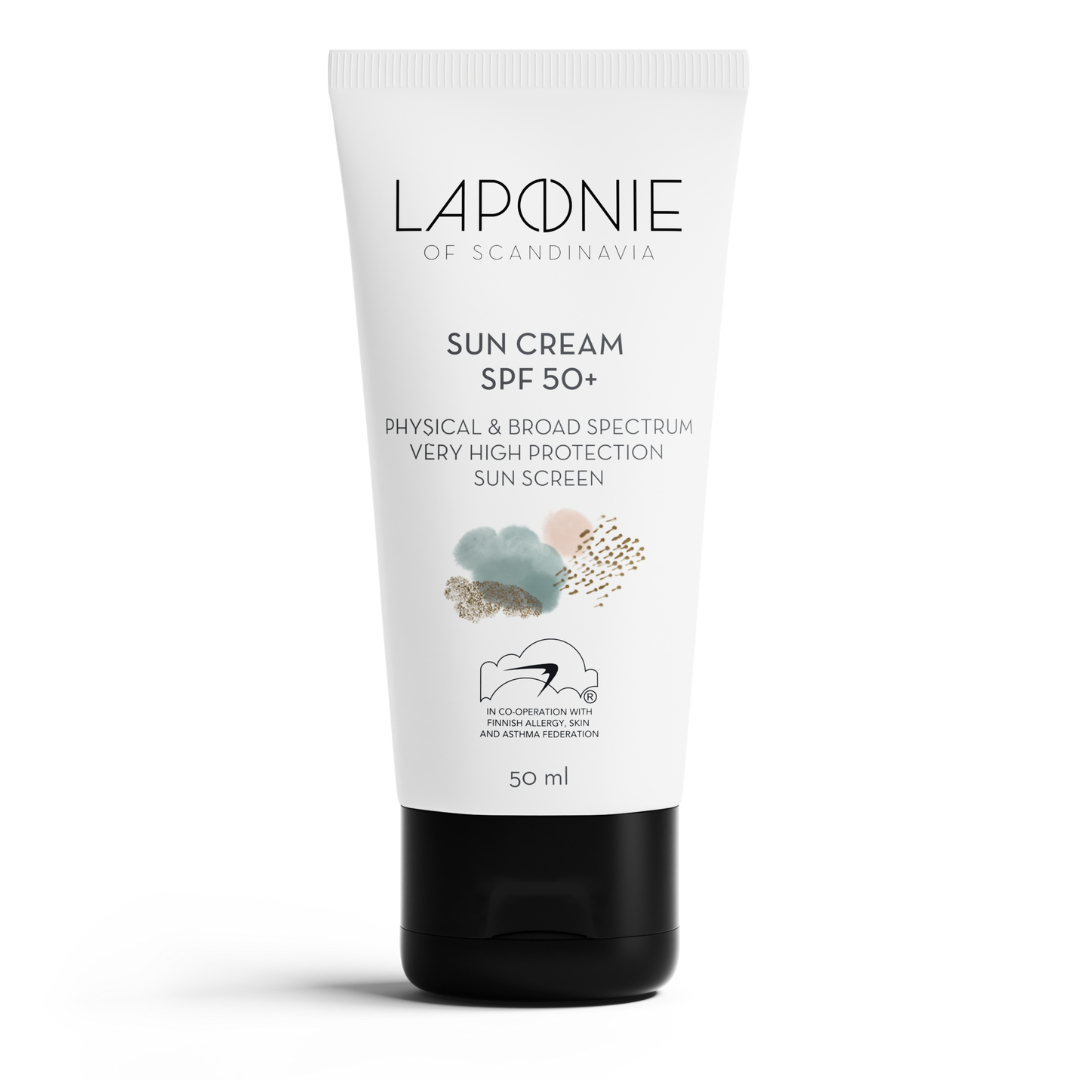
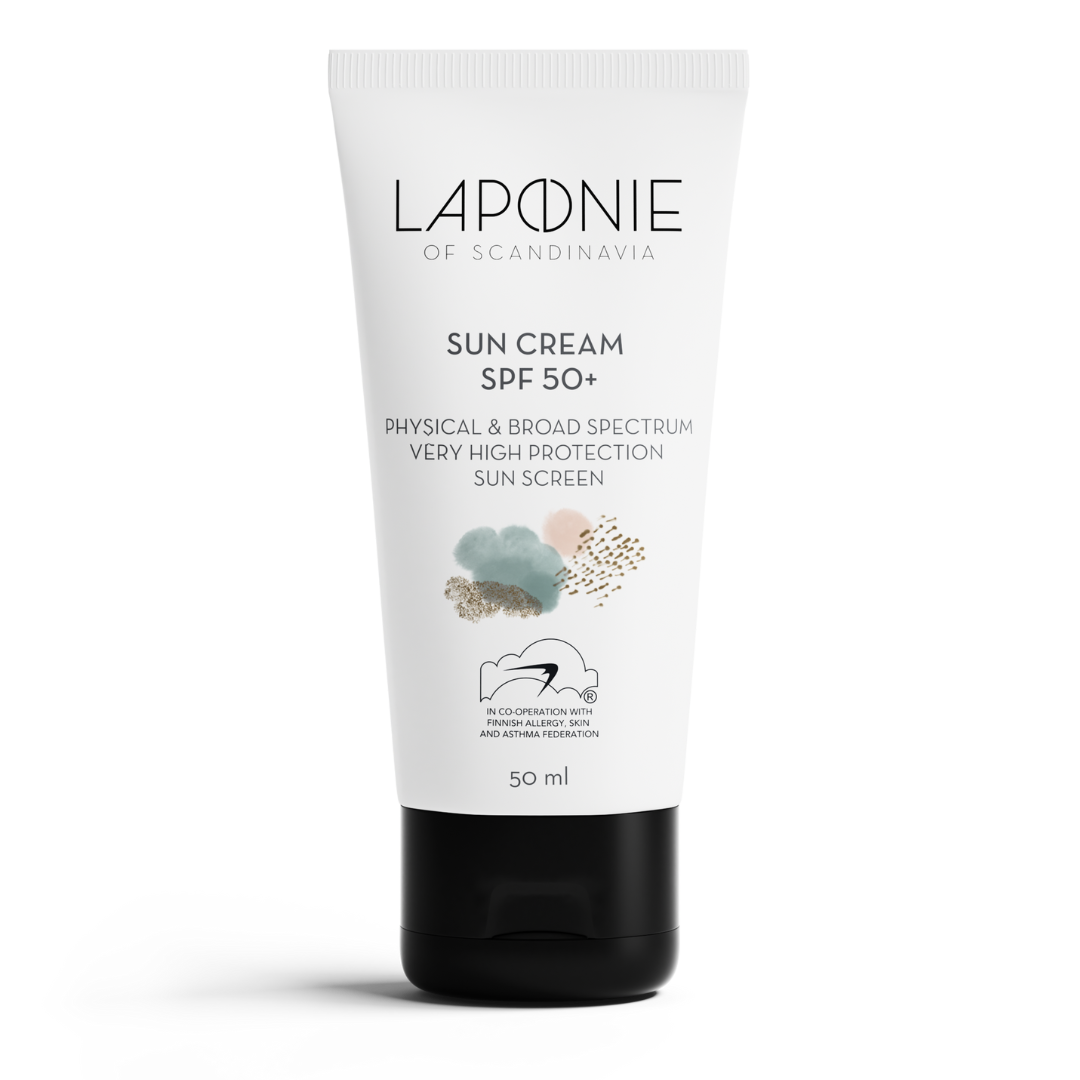
No added fragrance
No added fragrance or essential oils, floral waters, alcohol or fatty alcohols.
Formulated for sensitive & problem skin in our own lab
Our owners, CEO Kristina and cosmetic chemist Jaana, formulate all our products in our Helsinki lab, and test them on themselves - both have a long history of sensitive and problem skin.
Gentle & skin friendly preservatives
We've created a unique preservative system for the SPF Cream, to minimise overlap with our other products, using gentle preservatives, primarily organic acids and their salt forms. Check out our ingredient section above to learn more.
Allergy-labelled
All our products carry the Finnish Allergy, Skin and Asthma Federation's independent Allergy-label.
Balanced pH for healthy skin
The SPF Cream has a pH around 5.5 (healthy skin's own pH is slightly acidic, between 4.8 and 5.5) and will not upset or irritate skin.
A minimum of ingredients
Formulated with caprylic/capric triglyceride, a well-tolerated oil for most skin types, to soften and condition skin. It's derived from coconut, but is NOT coconut oil, so won't clog pores. It is also the ideal companion to our filter, dispersing it evenly in the Cream, for a smooth finish. Ectoin soothes redness and irritation, provides long-term hydration and helps strengthen the skin barrier and algae based silica hydrates skin with a hyaluronic acid-like effect, but at the same time goes to work on impurities and also balances out sebum production, without any dryness. Check out our ingredient section above to learn more.



